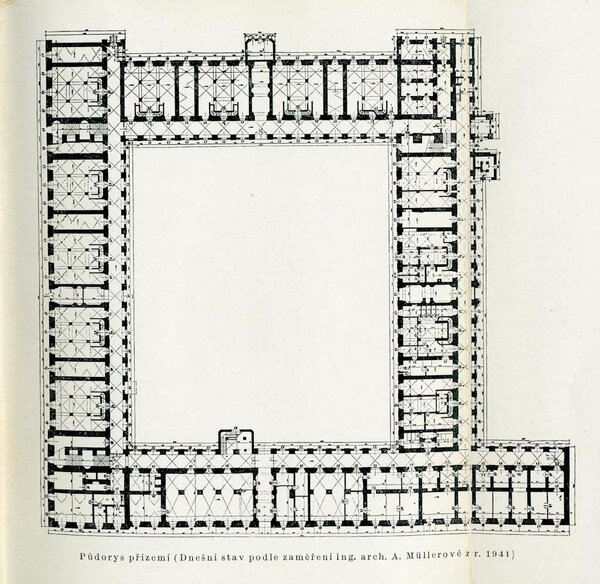History
The Invalidovna building in Prague´s Karlin is an excellent example of the Czech Baroque architecture.
It was constructed during the years of 1731-1737, following the example of Hotel Les Invalides in Paris, to provide accommodation for war veterans. Only a fraction of the original design was completed. The initial concept, which was nine times the size of Invalidovna today, was created and approved by the Imperial court in Vienna but is one of the greatest works of the leading Czech Baroque architect Kilian Ignaz Dienzenhofer carried out during his peak creative period in the 1830s.
It appropriately combines the militarily-simplistic governmental style of construction inspired by ancient Roman architecture with a monumental northern facade. This representative palace-style facade is an interesting and a typical Czech response to the official “imperial” style so characteristic of the reign of the Habsburg Emperor Charles VI. Possibly, Invalidovna was inspired not only by Les Invalides in Paris, but also by the El Escorial complex built by the Spanish king Philip II in Madrid.
Considering its intended size, Invalidovna was supposed to be a small, self-sufficient town, and if it had been completed, it would have been—together with its Parisian predecessor—one of the largest Invalides in Europe. However, even though it has never been completed as originally intended, Invalidovna is still one of the largest Baroque complexes in Prague and the whole of Bohemia. It is a functionally and operationally well thought-out and complete unit. It boasts innovative duplex apartments for disabled residents, grandeur of shared areas and innovative communications, including staircases.
Besides being a fine display of high quality construction and architecture, Invalidovna is also the oldest example of social foundation of this type aimed at disabled military veterans in the Czech lands. It served its purpose until the First Republic. In this respect, it is also linked to the life and work of a leading Czech photographer and military veteran Josef Sudek. Sudek was hit by a grenade in 1916 at the Italian front. He lost his right arm, which was amputated by doctors in Graz. During the years of 1922-1927, he lived in Invalidovna where the state sponsored his retraining to a professional photographer. This was the place where he created a series of photographs titled From Invalides (also known as From the Veterans Hospital). Reminiscent of the genre paintings of the 19th century, this series of highest artistic quality is an interesting probe into the social life of local residents.
